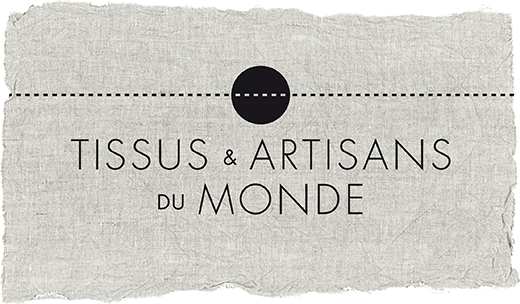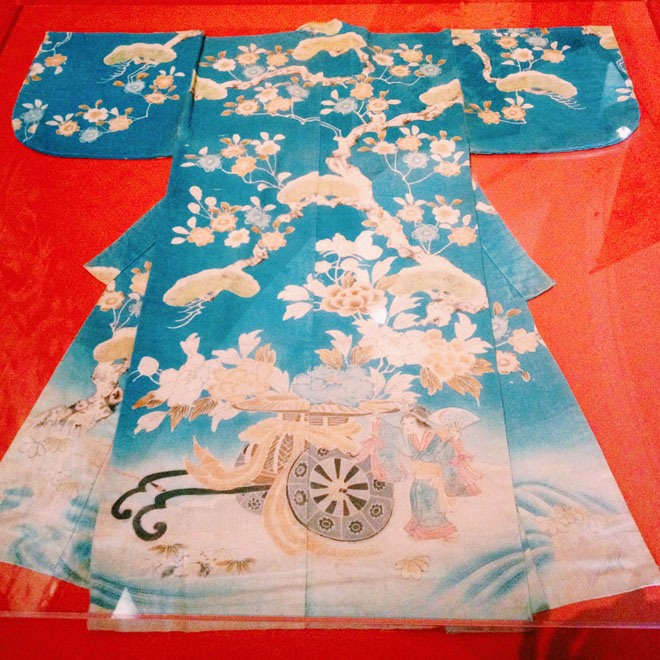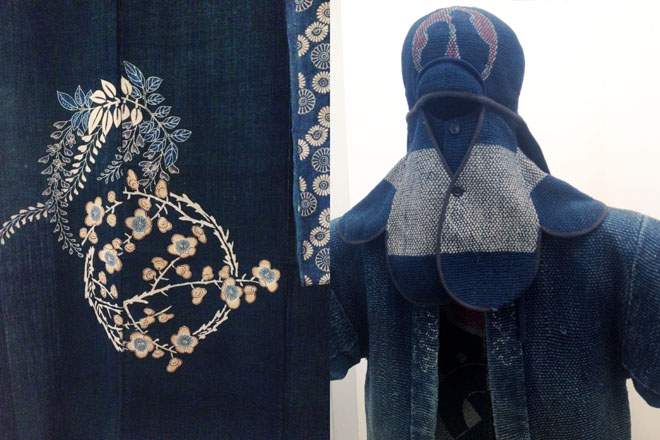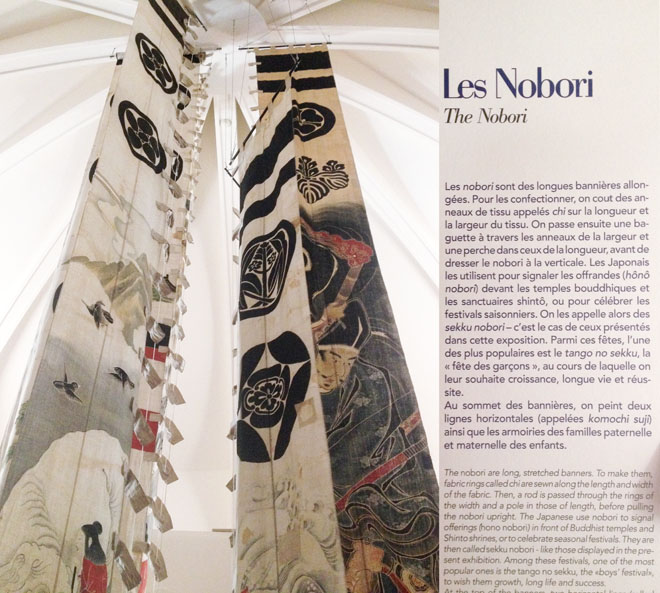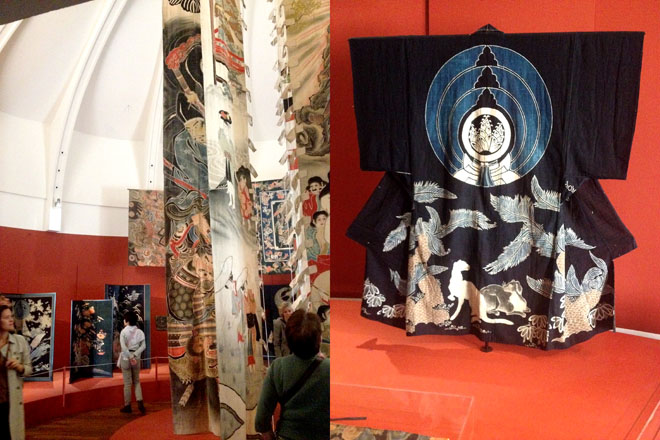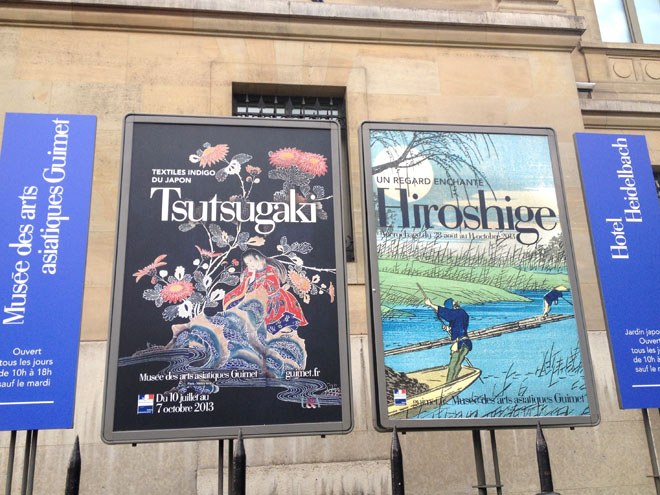
10.09.2013
Japan has been in the spotlight throughout the summer at the Guimet Museum, with among others a magnificent exhibition of the great engraving master Hiroshige, one of my favorite artists, and a presentation of textiles from the museum collections about Tsutsugaki Japanese fabrics : handmade textile pieces of incredible refinement. The show has just ended and I almost missed it!
Tsutsugaki is a technique from the 14th century developed by Japanese masters (drawers, artisans and dyers) which became more popular at the Edo era (1641-1853) . This resist technique requires the use of a rice paste made applied on the fabric through cone-shaped tubes, to form symbols and patterns typical of the traditional Japanese culture. Cherry blossoms flowers, chrysanthemums, branches, animals or woman figures… such drawings of great fineness appearing after successive baths of indigo dye.
All in subtle shades of blue, these cotton and linen fabrics were used on a daily basis in Japan, for the tailoring of kimonos, but also futons, banners or even traditional firefighter uniforms .
